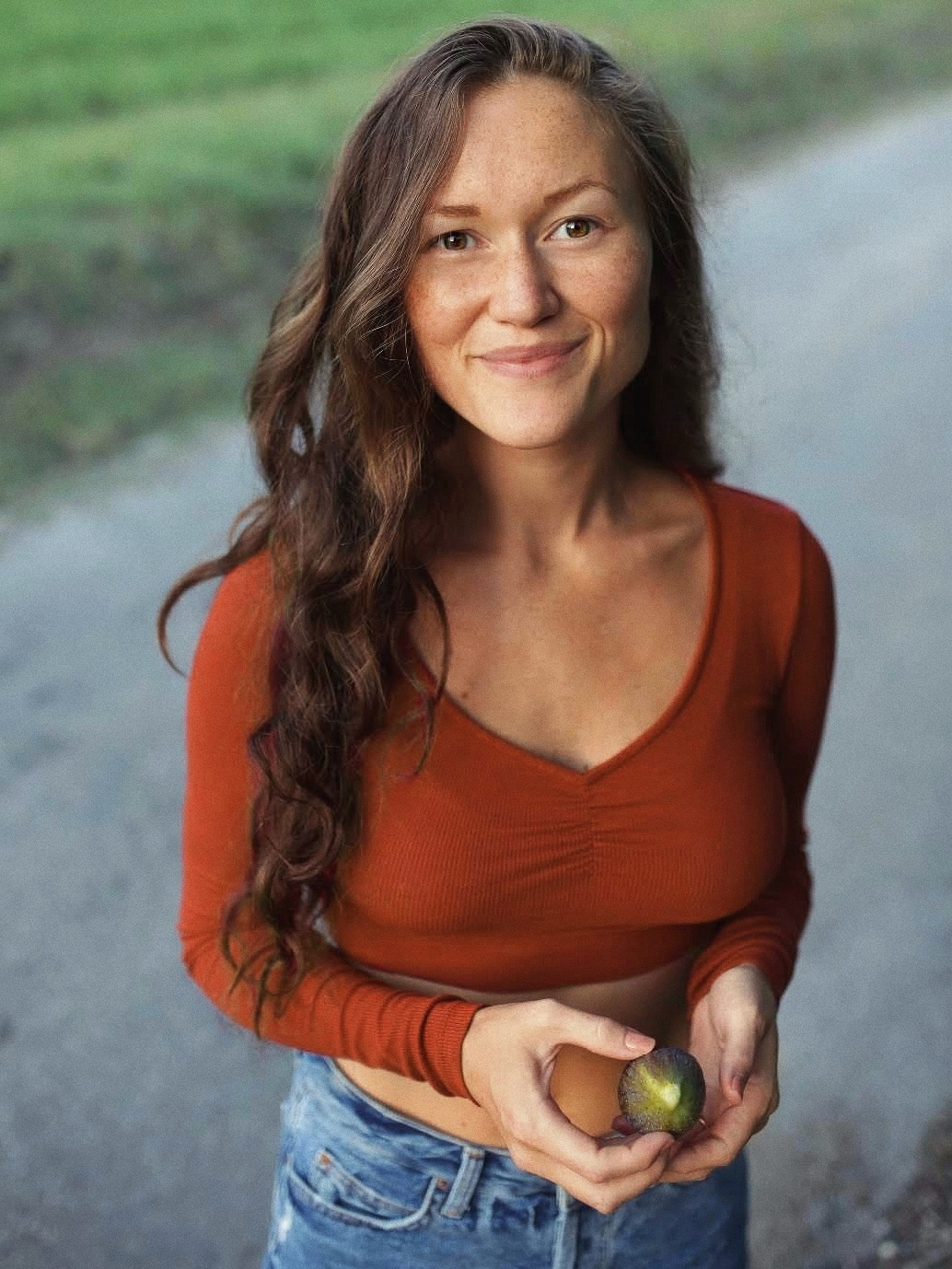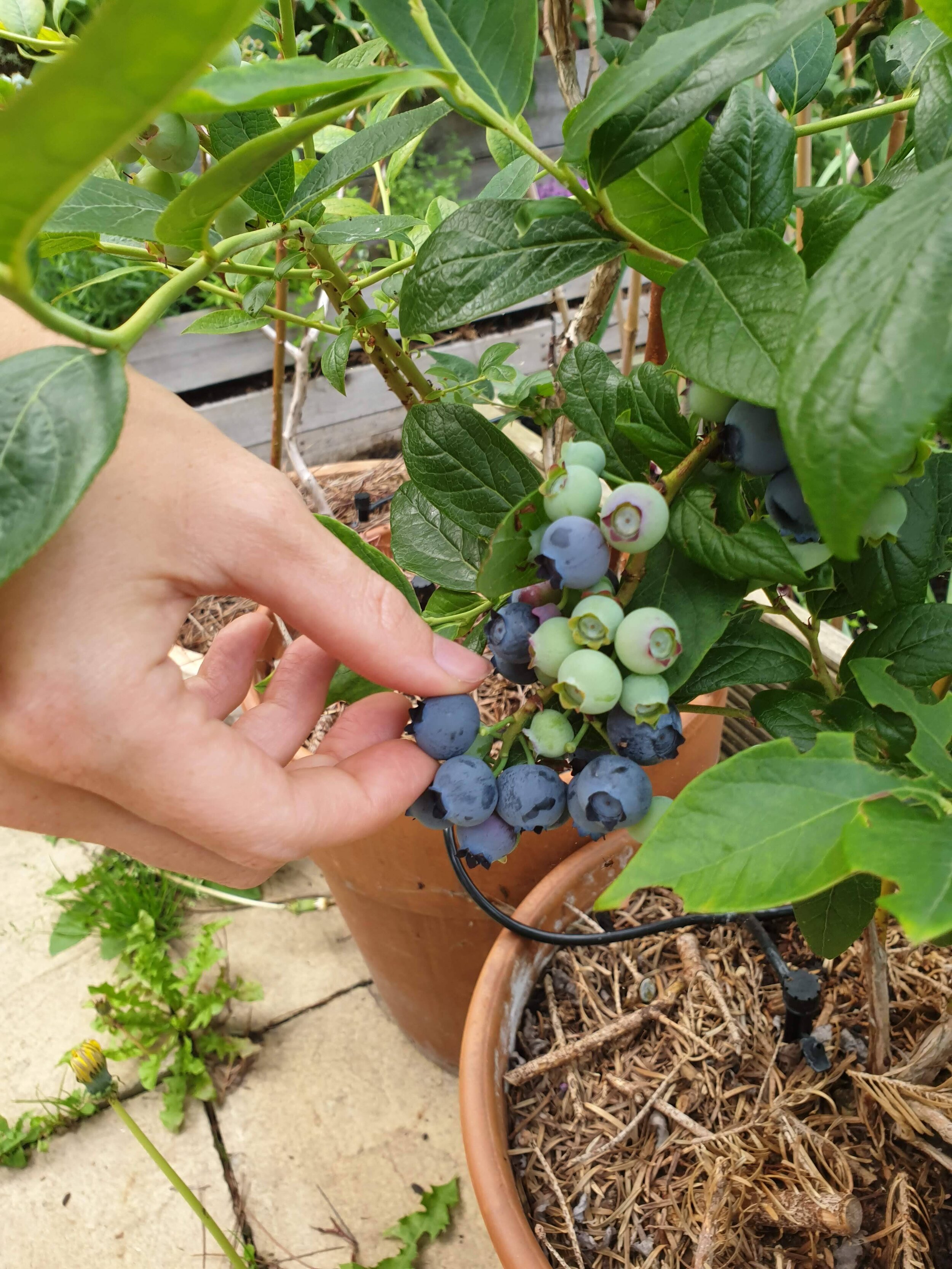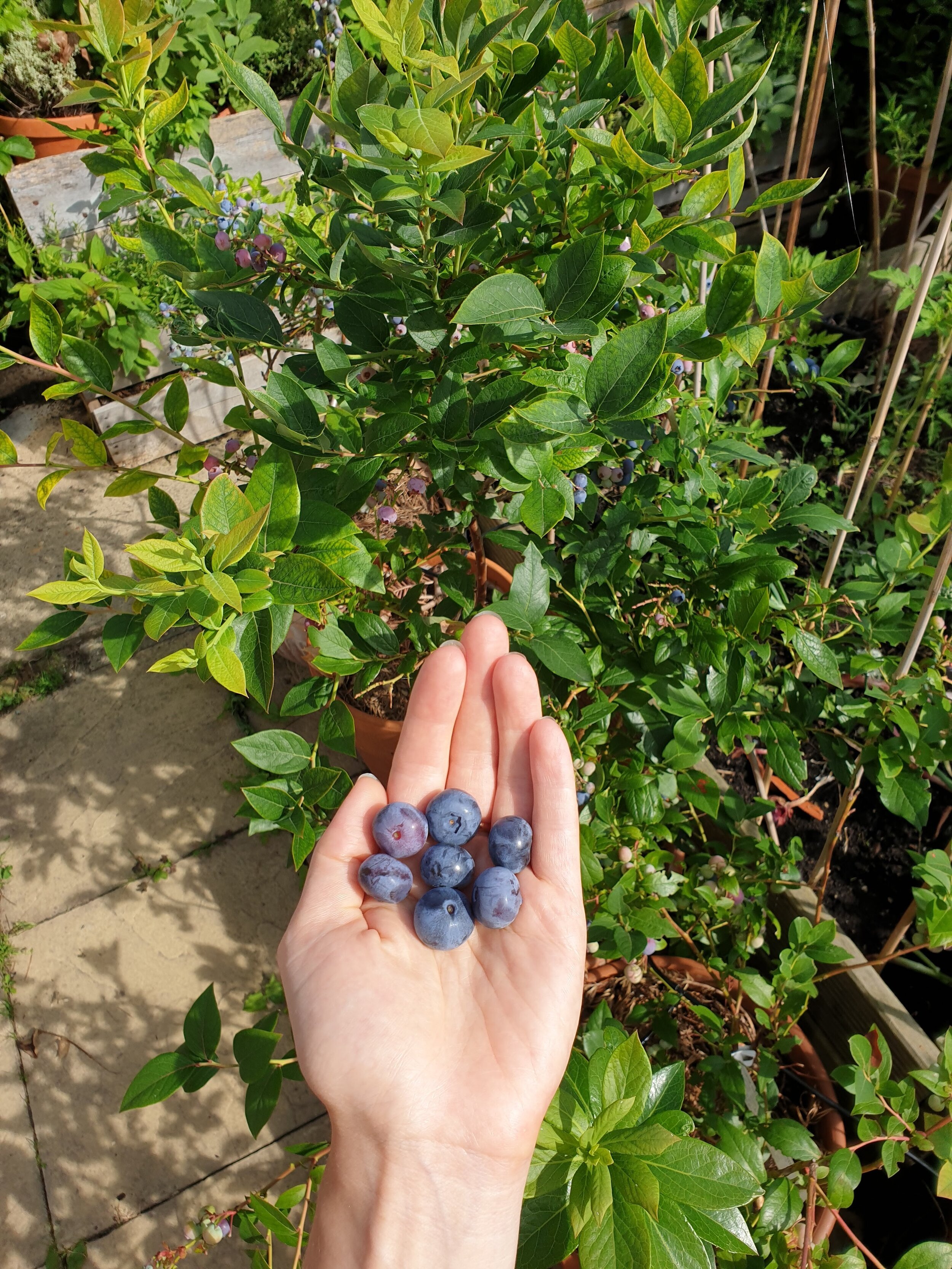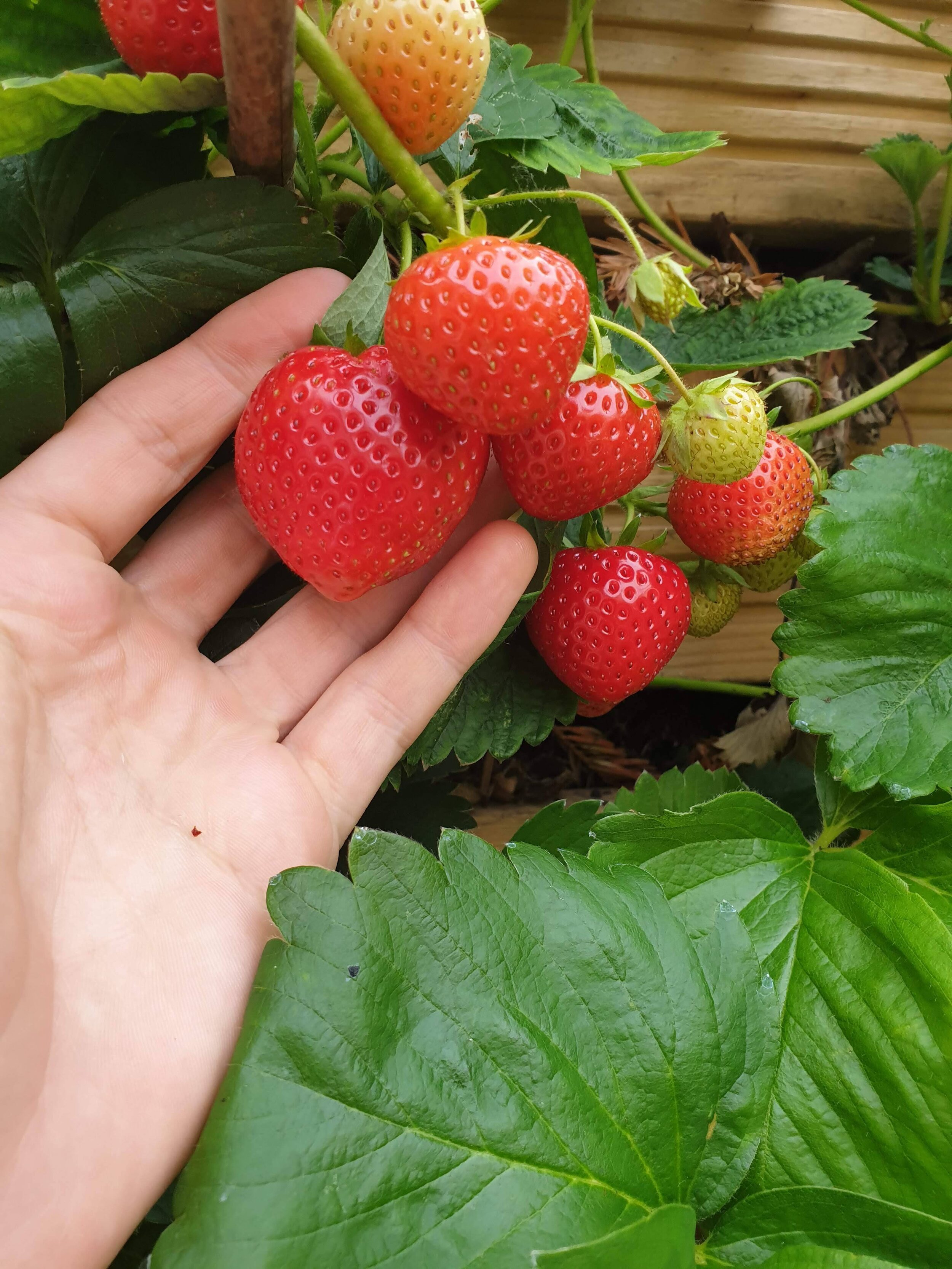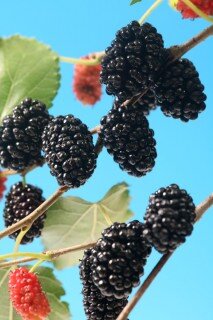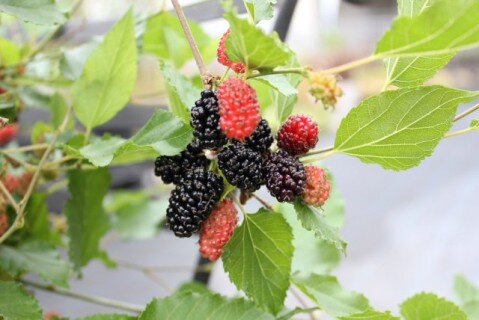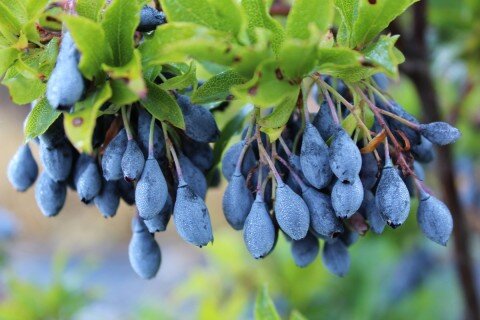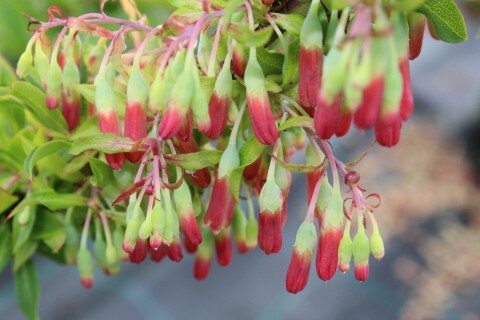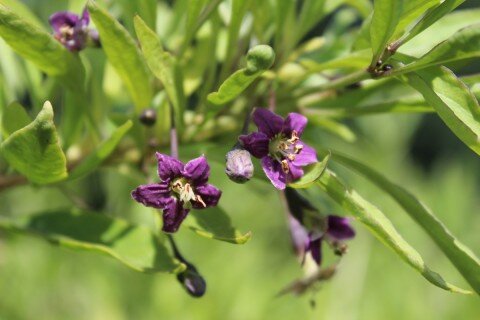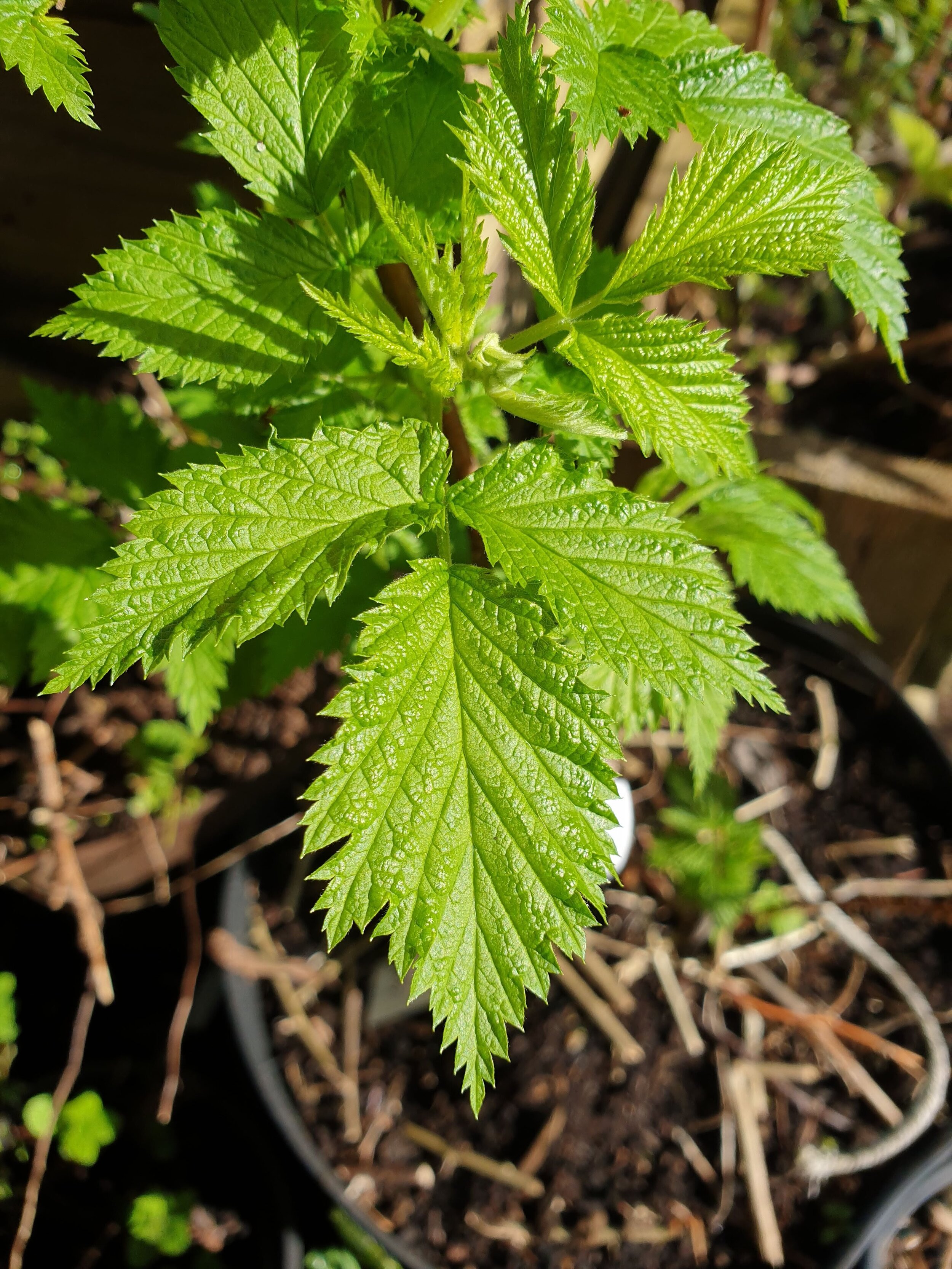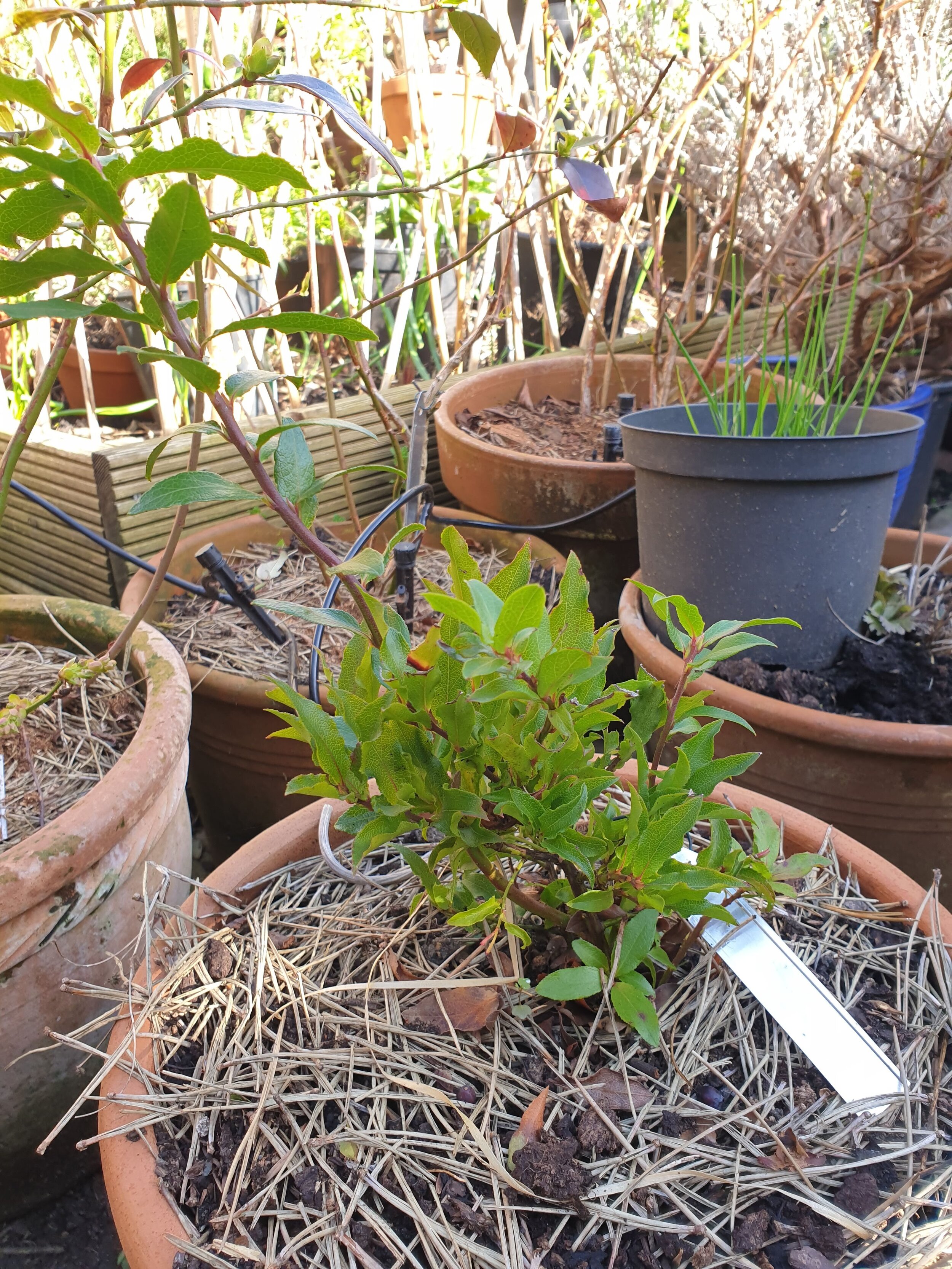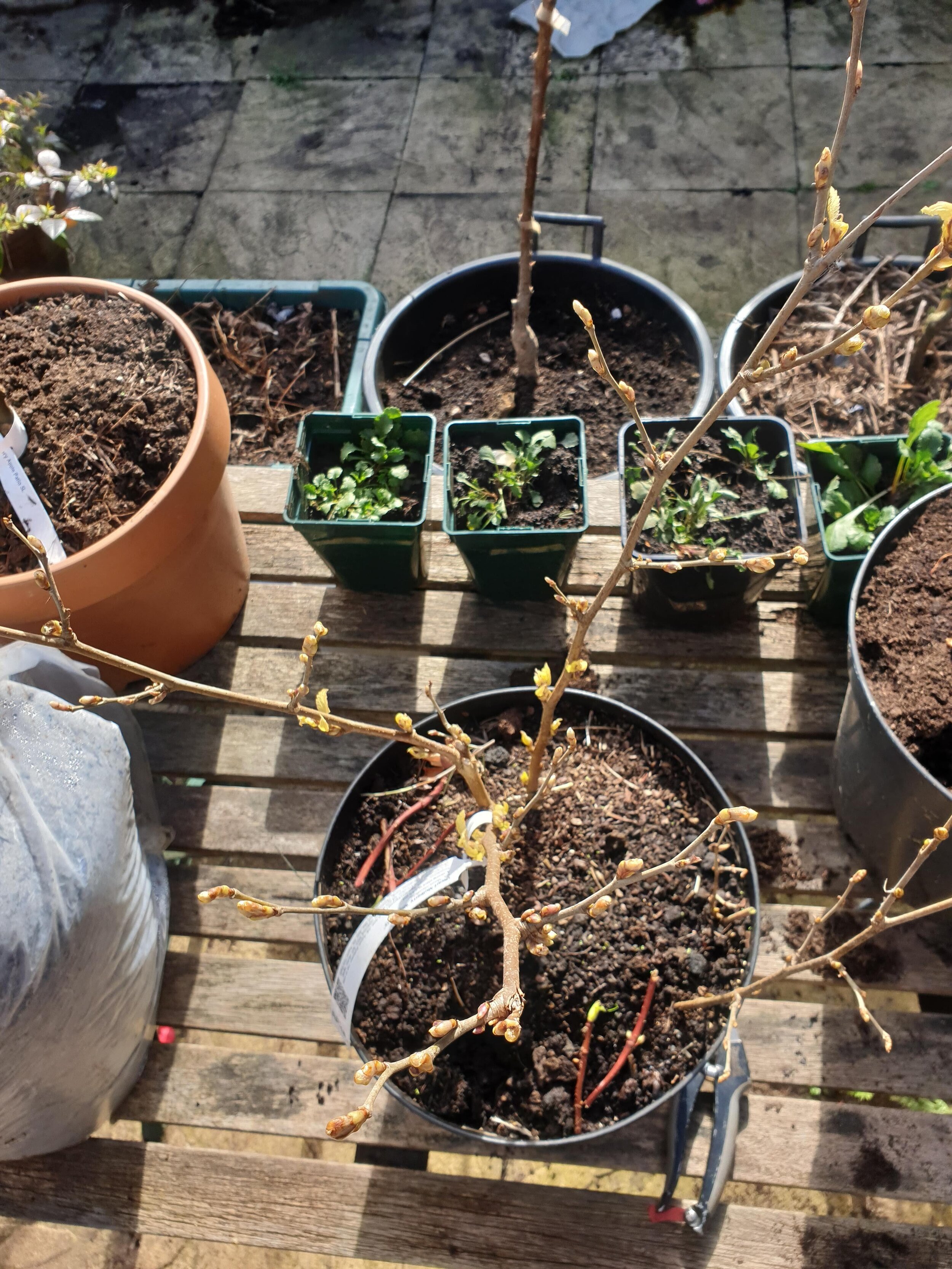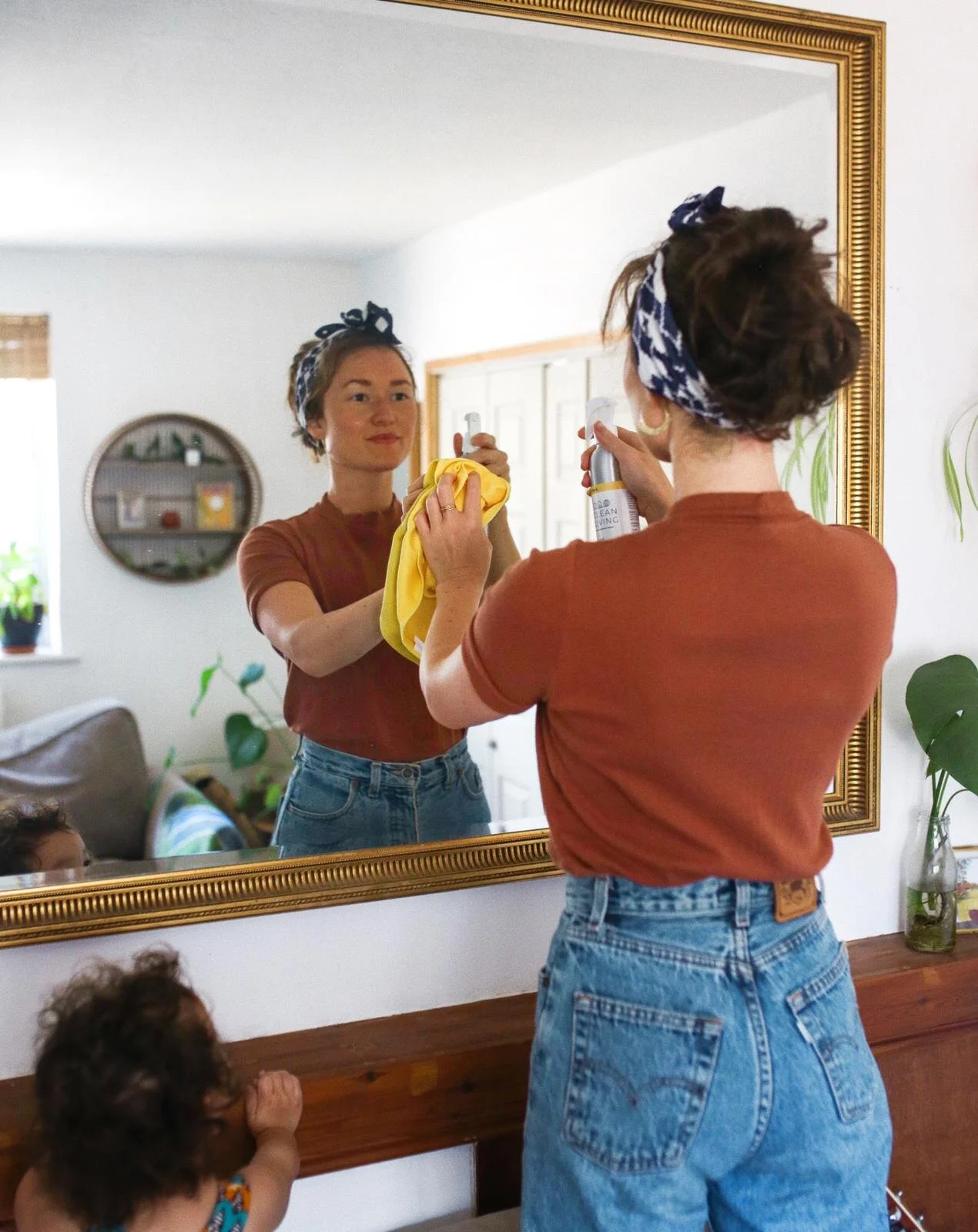Urban Garden: Grow Your Own Superfoods
This post includes some gifted plants from Lubera.
Growing Food In A Small Garden
We try to grow as much produce at home in our small urban garden in East London. We don’t have a lot of space - about 56 sqm, but we hope to grow as many high-value crops as possible.
We eat a lot of garlic, onions, tomatoes, and beans - mostly in sauces, so those are the annual veggies we tend to focus on. Garlic and onions don’t take up much space, so we grow them in between spaces of other crops, like the different varieties of beans and tomatoes. We also grow lots of fruit and, although in the early phases, we know they’ll produce more and more each year!
All of our fruit is grown in pots - because of the small space, this naturally keeps them smaller than what they’d be if grown in the ground, but we’re not able to put anything in the ground as our garden was all paved over when we moved in. Figs are some of our favourites, as are the sweet plums that are only starting to pay back our investments - but regular croppers are strawberries and blueberries which, from our experience, don’t need much attention or take up much space. As long as they have light and water, they produce really well for us!
Growing Superfoods In 2020
With this in mind, for 2020 we‘re trying to grow a few more fruit bushes that are suited to our environment.
In London, and other urban areas, it can be quite hard to find space, so we’ve sought out some naturally compact and dwarfing varieties that are suitable to grow in our garden, or for a balcony or even a windowsill.
We’re aiming to grow fruits that:
Don’t take up too much space
Can be grown in pots
Don’t require too much care
Have a high retail cost, thus saving us money
Are nutritionally dense
We wrote to Lubera, a Swiss nursery that ships around the UK and Europe, to help us pick some plants for this experiment - all of which to be grown in our patio garden. One reason we really like Lubera is because they are Swiss-based, so their winters are more intense than those we get in the UK - meaning that the plants they sell (unless stated otherwise) are generally quite hardy!
Mulberry Bush - Dwarf Mojo Berry
I love mulberries, but we’ve never had the space to grow them - up until now. We now have a small bush that is around 30cm tall sitting in our garden (last summer it fruited). It’s an early fruiter, and produces delicious sweet mulberries that can be eaten fresh or dried. It might not be worth drying them, as you’ll need quite a few, but in the early years at least we are planning on using the fresh berries as a snack!
The naturally dwarfing 'Mojo Berry' is a breakthrough in mulberry breeding. It combines many properties that are necessary for the use of mulberries in a modern garden or on a balcony. The dwarf mulberry, for example, bears fruit on very young plants; it remains quite compact and bears fruit on both last year's and this year's shoots. Therefore, the small, very tasty fruits can be harvested over a very long period from about June to September.
- Lubera
In addition to this, Mojo Berry only grows up to 150cm and is winter tolerant to -15 degrees celsius, making it ideal for all types of grow-your-own.
Mulberries: Nutritional Info
Fresh mulberries consist of 88% water and have 60 calories per cup (140 grams).
By fresh weight, they provide 9.8% carbs, 1.7% fibre, 1.4% protein, and 0.4% fat.
Mulberries are often consumed dried, similar to raisins. In this form, they contain 70% carbs, 14% fibre, 12% protein, and 3% fat — making them fairly high in protein compared to most berries.
Here are the main nutrients in a 3.5-ounce (100-gram) serving of fresh mulberries (source):
Calories: 43
Water: 88%
Protein: 1.4 grams
Carbs: 9.8 grams
Sugar: 8.1. grams
Fiber: 1.7 grams
Fat: 0.4 grams
Mulberries are rich in many vitamins and minerals, particularly vitamin C and iron:
Vitamin C. An essential vitamin that is important for skin health and various bodily functions (source).
Iron. An important mineral that has various functions, such as transporting oxygen throughout your body.
Vitamin K1. Also known as phylloquinone, vitamin K is important for blood clotting and bone health (source).
Potassium. An essential mineral that may lower blood pressure and reduce your risk of heart disease (source).
Vitamin E. An antioxidant that protects against oxidative damage (source).
Blueberry - Luberissima Blautropf
Blueberries are one of the success stories of our small city-plot - and we’re glad, because organic blueberries are quite costly! We now snack on blueberries - a few handfuls each day - during the summer. With not a lot of space we’ve managed to grow multiple plants, each giving hundreds of berries to use in June, July, and August. Blautropf is a type of blueberry created by Lubera which produces a very compact bush - ideal for borders or to be grown underneath other larger plants. The blueberries are tear-dropped - almost a similar shape to a honeyberry, but with the distinct taste of the blueberry - its flowers are red, a stark contrast to the white ones we usually see.
The plants are winter-hardy, and won’t grow much bigger than 50cm compared to the 1.5m of regular blueberry bushes! One or two blueberry bushes is a great way to start growing your own food in a fun and cost-effective way. After one year, the bush will have likely paid you back in produce!
Blueberries: Nutritional Info
Blueberries are low in calories and fat, yet provide decent amounts of healthy fibre.
A 3.5-ounce (100-gram) serving of raw blueberries has (source):
Calories: 57
Water: 84%
Protein: 0.7 grams
Carbs: 14.5 grams
Sugar: 10 grams
Fiber: 2.4 grams
Fat: 0.3 grams
Blueberries are a good source of several vitamins and minerals, including:
Vitamin K1. This nutrient is also known as phylloquinone. Vitamin K1 is mostly involved in blood clotting but may also benefit bone health (source).
Vitamin C. Also known as ascorbic acid, vitamin C is an antioxidant important for skin health and immune function (source).
Manganese. This essential mineral is needed for normal amino acid, protein, lipid, and carbohydrate metabolism (source).
Blueberries also contain small amounts of vitamin E, vitamin B6, and copper.. Anthocyanins are the main antioxidant compounds in blueberries. These anthocyanins seem to be concentrated in the skin of the fruit. Therefore, the outer layer of the berry is the most nutritious part.
Raspberry - Dwarf Lowberry® Baby Dwarf®
Raspberries are another summer favourite; however, they are yet to grow well in our garden. This year we are trying the Lowberry: a type of raspberry; a naturally compact dwarfing variety growing no higher than 60cm and producing sweet fruits. We’ve previously not had much luck with raspberries, so we’re excited to see how these grow - especially considering tat store-bought have a short shelf life and are expensive. They can be grown in pots or in the ground.
Raspberry: Nutritional Info
One cup (123 grams) of red raspberries contains:
Calories: 64
Carbs: 14.7 grams
Fiber: 8 grams
Protein: 1.5 grams
Fat: 0.8 grams
Vitamin C: 54% of the Reference Daily Intake (RDI)
Manganese: 41% of the RDI
Vitamin K: 12% of the RDI
Vitamin E: 5% of the RDI
B vitamins: 4–6% of the RDI
Iron: 5% of the RDI
Magnesium: 7% of the RDI
Phosphorus: 4% of the RDI
Potassium: 5% of the RDI
Copper: 6% of the RDI
They provide more than half of the RDI for vitamin C, a water-soluble nutrient essential for immune function and iron absorption. Raspberries also contain small amounts of Vitamin A, thiamine, riboflavin, vitamin B6, calcium and zinc.
Goji Berry Sweet Amber
We’ve had a goji berry bush in our garden for about three years and, while it grows very well, it’s not produced a big crop for us - only ever a few berries here and there. It could be because the pot is too small but, regardless, we want to try a new variety - especially as Sweet Amber is suitable for pots.
The sweet berries can be dried; this is our main goal as we use them regularly in our breakfast. The amber colour is a novelty, and not something we’ve seen before, so we’re excited to see how Sweet Amber grows compared to our regular bush.
Goji Berry Nutritional Info
Goji berries are a good source of vitamins and minerals, including:
Vitamin C
Iron
Vitamin A
Zinc
Goji berries contain all eight essential amino acids. A 1-ounce serving provides nearly 10 percent of your daily value for protein. For fruit, this is a surprising amount of protein.
We can’t wait to see how the goji berries, raspberries, blueberries, and mulberries grow. We’ve set them up in our garden, and will update with progress via social media. For more information on how we do on our homegrown-superfood journey, find me on Instagram here.
Finally, I’d like to say a big thank you to Lubera for supplying me with the plants mentioned in this blog post! For more on Lubera, visit their website here.
(Top left: Raspberry Dwarf Lowberry Baby Dwarf - top right: Goji Berry Sweet Amber - bottom left: Blueberry Blautropf - bottom right: Mulberry Mojo Berry)
